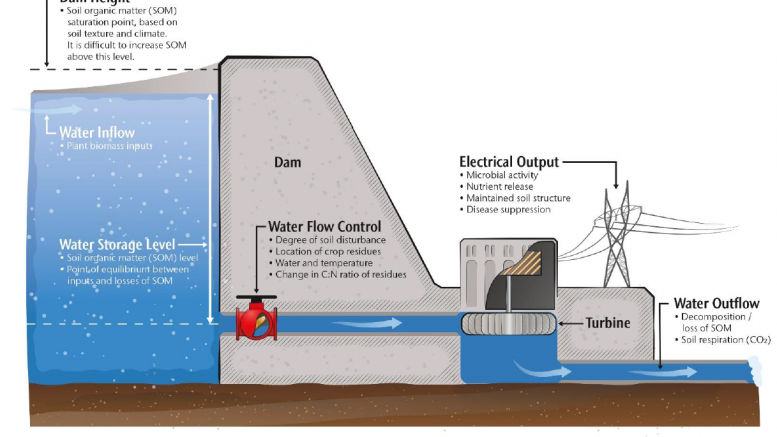A new publication from Washington State University Extension is available for free download.
Understanding organic matter’s role in soil can be critical to any agricultural operation. Learn the emerging methods of measurement in this publication.
Here are the Key Points in the publication:
- Soil organic matter provides numerous functions in soil. Understanding its composition and how it interacts with clay, plant nutrients, other compounds, and the soil microbial community is key to improving soil management.
- Soil organic matter has long been studied using an alkaline extraction which produces humic substances: humic and fulvic acids. This tool has allowed researchers to separate organic matter from soil minerals to study the structure of the organic molecules present in soil.
- The term humus has been used for more than 200 years to describe organic materials produced through decomposition of crop residues and other organic inputs to soil. A portion of soil humus was thought to be composed of material that was stable and resistant to further decomposition because of large size or lack of digestibility to microbes.
- New tools have allowed soil organic matter to be studied in conditions closer to the natural environment and have also shown that the soil environment, not inherent properties of organic molecules themselves, greatly affects decomposition of organic molecules. Terms, such as humus, humification, humic and fulvic acids, which are tied to the alkaline extraction procedure, have changed through time, and are not descriptive of soil organic matter functions or stability. The concept of large, stable, older organic molecules resistant to decomposition is no longer valid.
- Smaller organic molecules that are products of decomposition may behave like oil in water to form larger conglomerates (known as supramolecules) with a hydrophobic interior and a hydrophilic exterior.
- The location of organic matter affects its reactivity in the soil. Organic matter can adhere to mineral particles, be protected in aggregates, be dissolved in the soil water, or remain as organic particles. Organic matter that is associated with mineral particles is thought to be more stable in the soil, but interactions with root exudates can mobilize mineral-associated organic matter and associated nutrients.
- Measuring soil organic matter has also advanced. Although there are many soil health indicators related to soil organic matter, research has started to narrow the number of tests that are both useful for management and commercially available. Two such tests are active carbon and carbon mineralization representing both the accumulation of soil organic matter and its use (loss) as an energy source by soil microbes.

